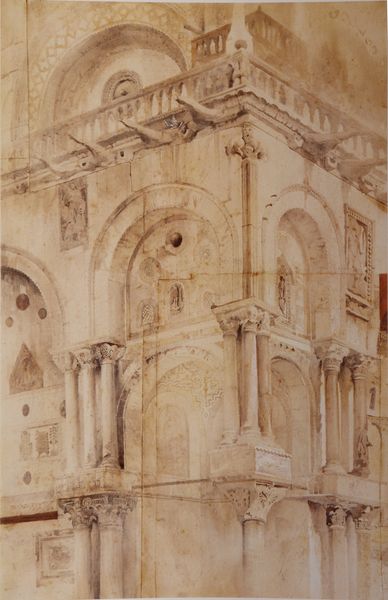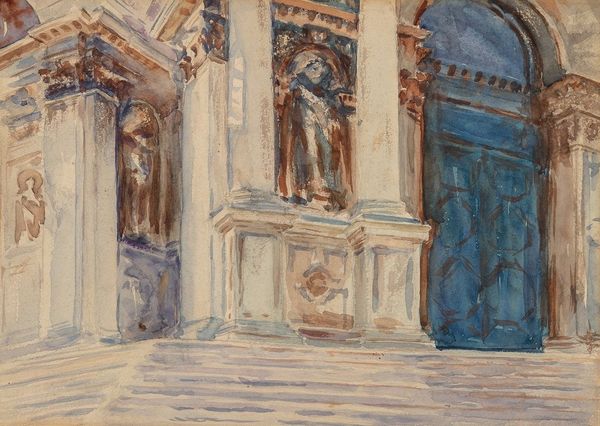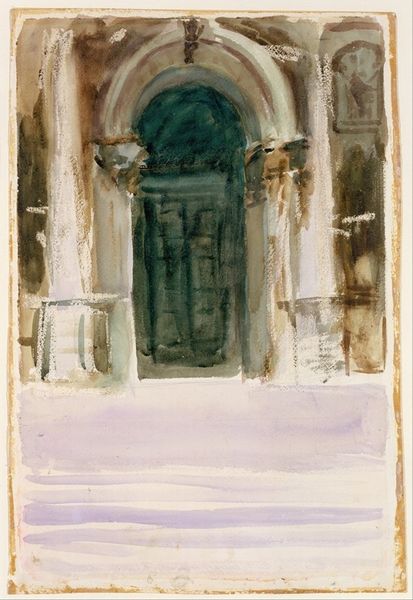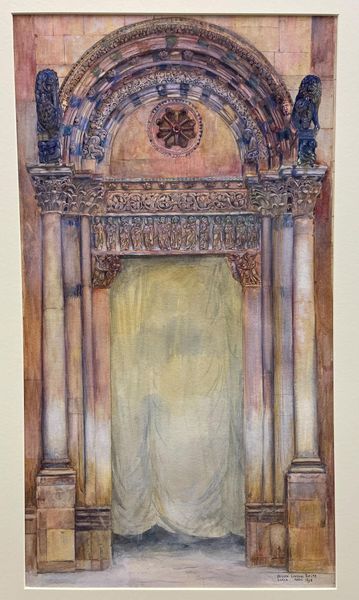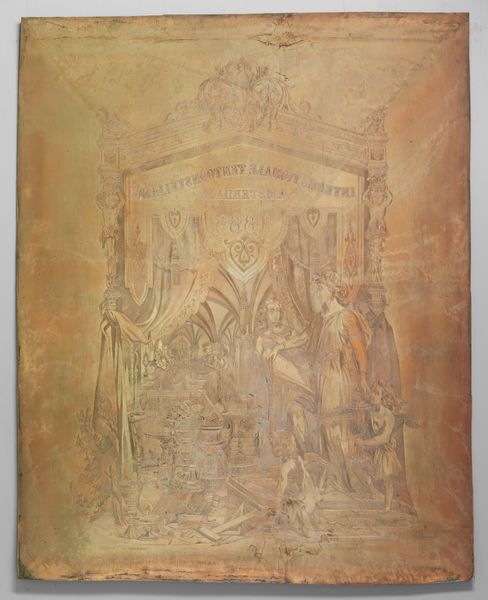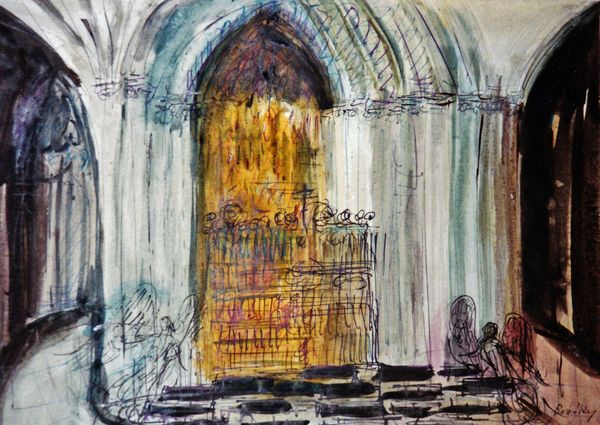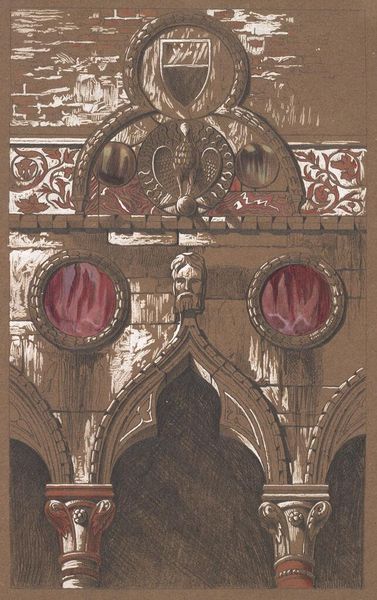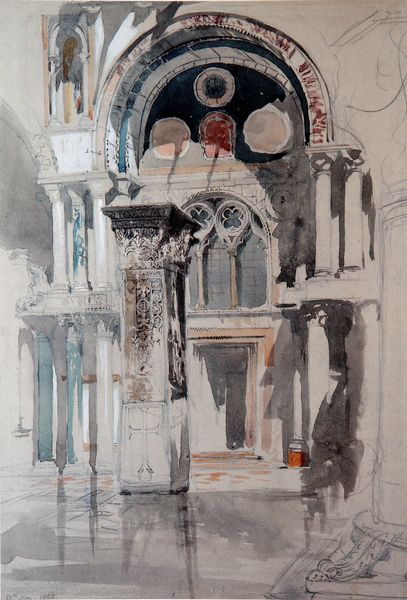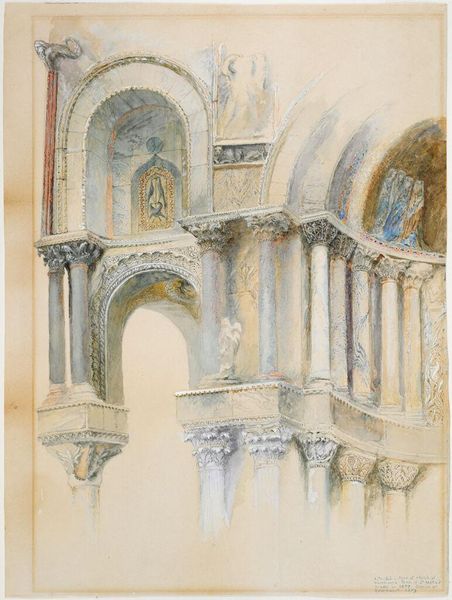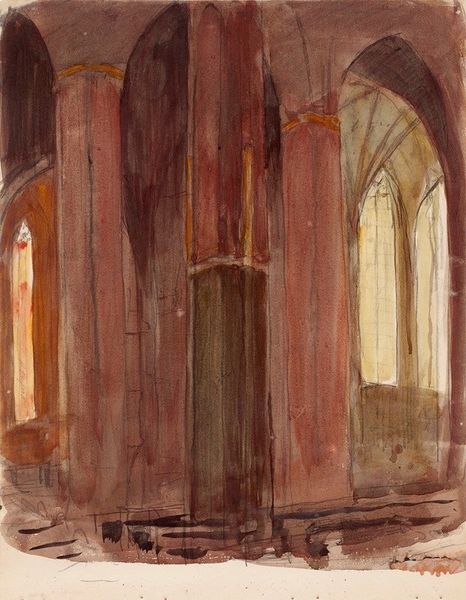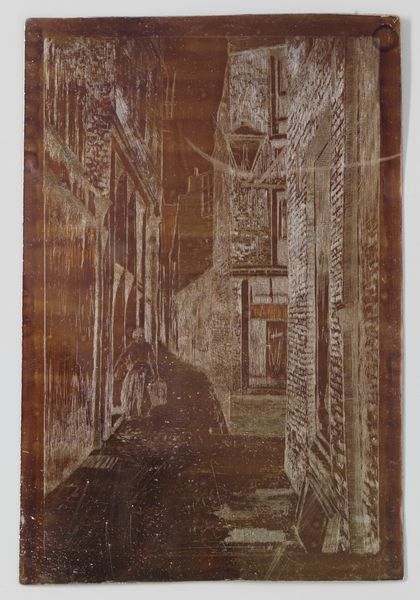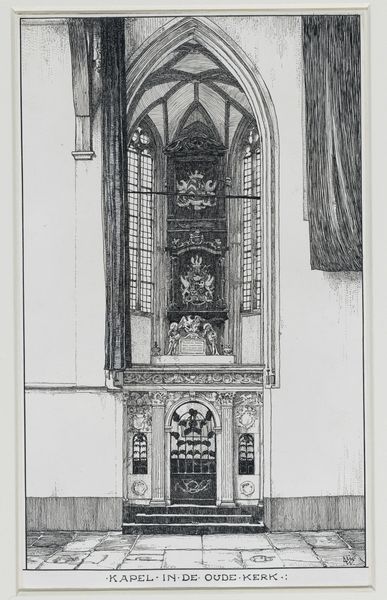
Copyright: Public Domain: Artvee
Editor: This drawing, “Saint Stanislaus” by Leon Wyczółkowski, dating from 1911-1912, uses pencil to capture this monumental architecture. I find the composition, with its stark contrast between the dark, heavy stone and the golden, ethereal archway, so striking. What aspects of this piece do you find most compelling? Curator: Well, let's consider the means of production. The stark contrast you mentioned isn’t just visual, it's material. Graphite pencil, a relatively accessible material even then, is used to depict this monumental, likely expensive structure. It begs the question: who was this image intended for? Was it a study, a print for wider circulation? The very act of rendering opulent architecture in humble graphite brings up social and economic tensions. Editor: That’s an interesting point. So the choice of a "lowly" material challenges the traditional view of the church as inherently elevated or separate from the everyday lives of ordinary people? Curator: Exactly. Wyczółkowski’s choice to portray this grand edifice in a simple drawing implicates the artist and, potentially, the viewer in a dialogue about power and access. Think about the labor involved in quarrying the stone, carving the ornamentation – versus the relative ease of producing this image. Is it critical or celebratory? Perhaps both. What do you notice about the differing applications of pencil to create contrasting textures? Editor: I see that the stone textures are quite rough, with visible strokes, but the gold appears much smoother, almost blurred...it's quite captivating, but also strange that it appears that the stone portion took greater time, effort, and care. Curator: And what does that contrast in finish suggest about the relative value Wyczółkowski ascribed to these differing materials and structures? Remember, this was a time of immense social change, and Neo-Impressionism sought to capture not just optical sensations, but also deeper, perhaps political, realities. Editor: I hadn't considered the materials themselves as carriers of meaning, not just as tools for representation. I am taking new meaning away from this listening. Curator: Indeed. By examining the process and material choices, we unlock a richer understanding of the work’s place in its social and historical context.
Comments
No comments
Be the first to comment and join the conversation on the ultimate creative platform.
